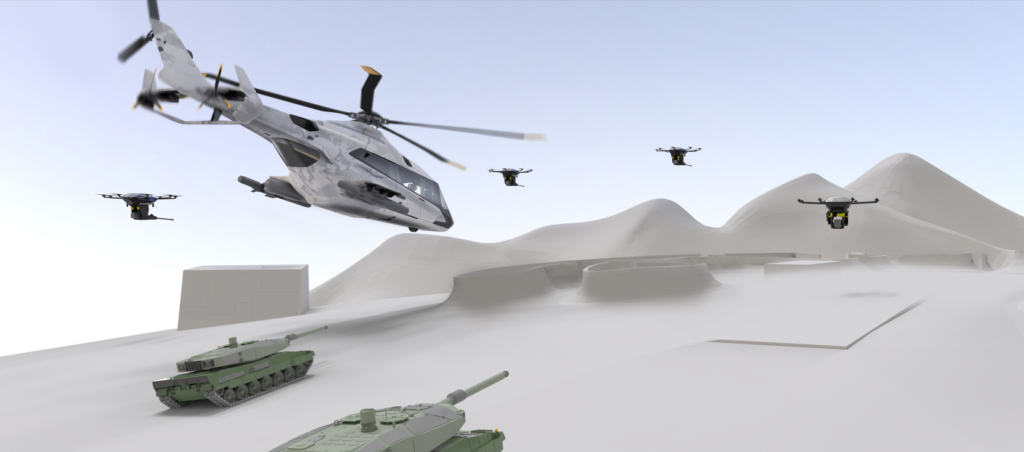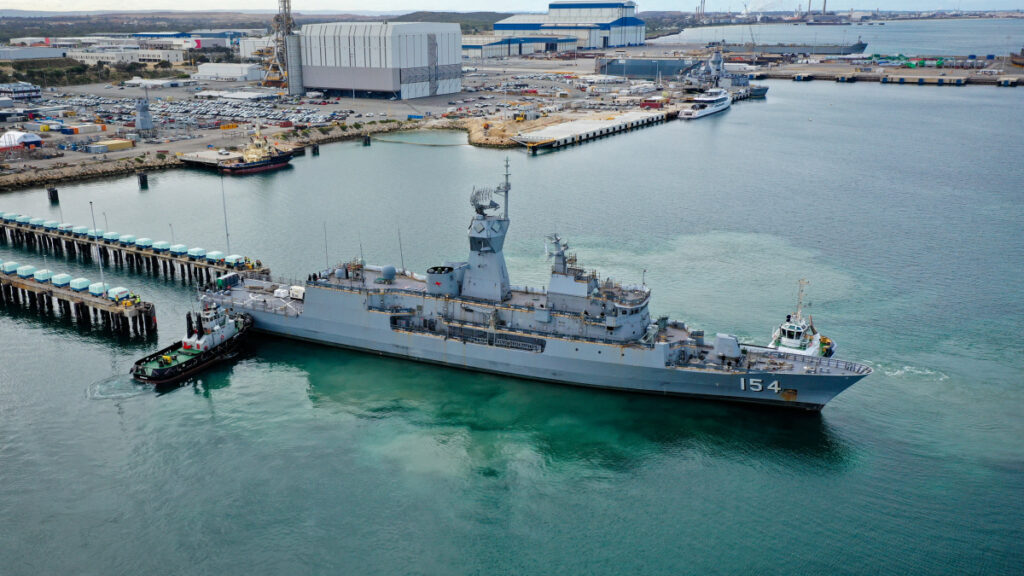A U.S. Marine Corps amphibious combat vehicle attached to Alpha Company, Battalion Landing Team 1/5, 15th Marine Expeditionary Unit, splashes off the amphibious dock landing ship USS Harpers Ferry (LSD 49) during Exercise Balikatan 24. (U.S. Marine Corps photo by Lance Cpl. Peyton Kahle)
WASHINGTON — BAE Systems is independently testing how a command and control suite, built by Norwegian defense contractor Kongsberg and dubbed the Integrated Combat Solution, could increase Marines’ ability to see across the battlefield in the service’s new Amphibious Combat Vehicle, officials from both companies told Breaking Defense.
Mark Brinkman, a BAE Systems executive, said the confluence of the systems aims to provide Marines increased situational awareness while remaining under the protective armor of the ACV. During the Modern Day Marine Exposition last week, the company had an ACV 30-mm variant on the floor equipped with ICS and allowed guests — and reporters — to see the system in action.
Next to the gunner’s seat were several screens with access to various cameras watching different parts of the exposition show floor. During a demonstration for Breaking Defense, the screen cycled to different cameras that were “tied in” to the ACV, as Brinkman described it, and interfaced with the vehicle to direct the 30-mm gun overhead to find new targets, all while providing the would-be gunner with pertinent information about the location of each camera.
The original ICS was born out of a upgrade program for the Norwegian Combat Vehicle 90, produced by BAE in Sweden, said Vetle Dragsten, Kongsberg’s technical director for the ICS. Brinkman added that as BAE has worked on separate research and development efforts related both to the ACV and the Advanced Reconnaissance Vehicle, it became apparent there was a need for “the ability to pass targets in a means other than voice to expedite that kill chain or kill web.”
“We integrated a lot of cutting-edge technologies. This is one that really stood out, so we’re continuing to work with Kongsberg because we think this would be a tremendous capability to add to the existing ACV fleet and potentially any other ground vehicle,” Brinkman said.
The ACV is the Marine Corps’ next-generation vehicle designed to move Marines from ship to shore that will replace the legacy Amphibious Assault Vehicle. ACV has four variants, and BAE Systems is under contract to produce and deliver the personnel carrier and command and control variants. The company has delivered three 30-mm gun variants to the Defense Department for government testing and is under contract to produce three test models of the recovery variant.
The capabilities of ICS that Brinkman described in many ways mirror the ones described by Pentagon officials as part of the Defense Department’s Joint All Domain Command and Control initiative — they make passing information between numerous nodes on a battlefield as seamless as possible. (The company executives said the comparison is one that others who viewed the demonstration during Modern Day Marine also pointed out.)
A BAE spokesperson did not provide a specific dollar amount when asked how much money the company has invested into integrating ICS with the ACV.
“BAE Systems and Kongsberg have been jointly investing [independent research and development funding] for several years to bring the ICS system to the United States Marine Corps to revolutionize their reconnaissance and counter-reconnaissance capabilities,” they told Breaking Defense.


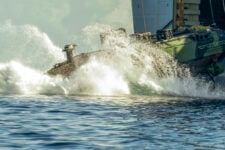
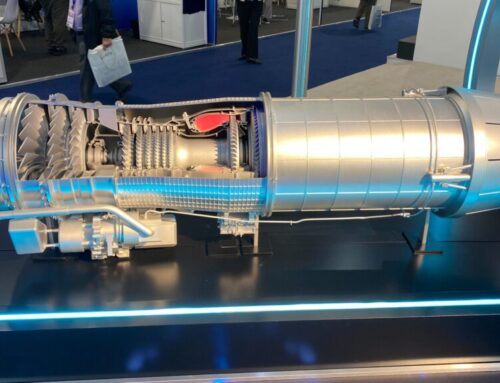
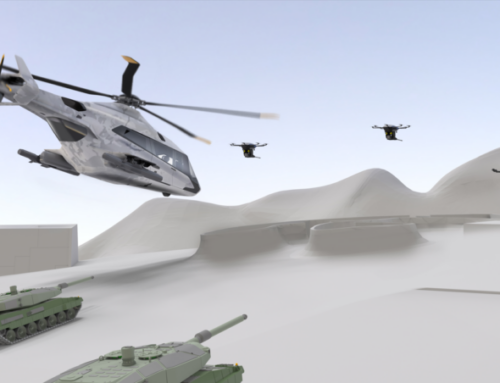
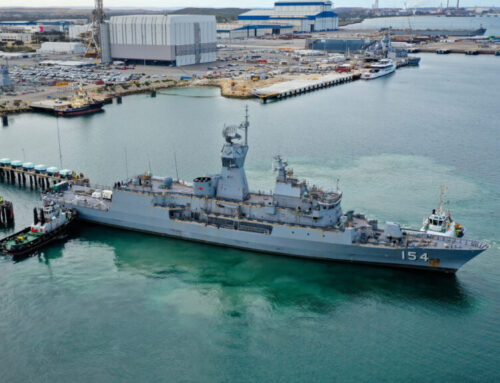
![The sights from the 2024 Farnborough Airshow [PHOTOS]](https://centurionpartnersgroup.com/wp-content/uploads/2024/07/IMG_8722-scaled-e1721930652747-1024x577-hZjwVb-500x383.jpeg)

